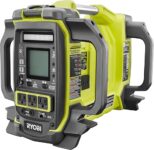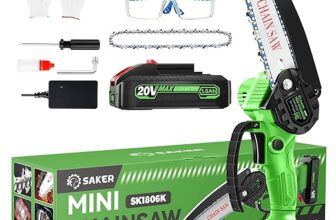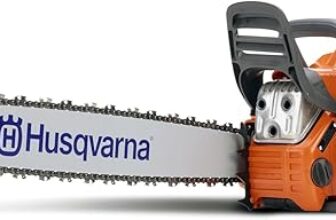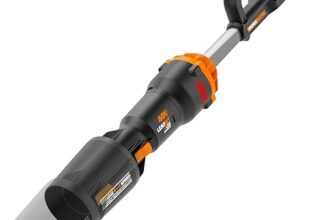
Ryobi 40V Generator vs Westinghouse WPX: Full Comparison
They test power, runtime, and reliability head-to-head—so you can finally know which battery setup actually finishes the job without leaving you stranded.
They’d be surprised: the Ryobi 40V Generator shows how a small battery-powered unit can replace a gas generator for many everyday chores. This comparison puts the Ryobi 40V Generator head-to-head with the Westinghouse WPX tri-fuel model, helping buyers choose between quiet portability and massive, fuel-backed endurance with cost tradeoffs.
Compact Backup

It suits users who need a quiet, portable power hub for small appliances and electronics without fumes or fuel. The unit’s app control and multiple ports make it flexible on job sites or as an indoor backup, but overall power and runtime hinge on the batteries you pair with it.
Whole House

It delivers reliable, large-capacity backup power for whole-house needs, RVs, and heavy jobsite equipment. Tri-fuel capability and robust outlets make it versatile for extended outages, but its size and weight limit portability compared with compact battery stations.
Ryobi Power
Westinghouse TriFuel
Ryobi Power
Westinghouse TriFuel
Ryobi Power
Westinghouse TriFuel
Westinghouse vs. Ryobi: The Best Pressure Washer for Car Washes
Key specs and how to read them
Quick spec snapshot
Ryobi (battery inverter)
Westinghouse (open‑frame tri‑fuel)
Power ratings — running vs. peak
Continuous (running) watts tell what the unit can sustain — Ryobi for small appliances and electronics, Westinghouse for whole‑house loads. Peak (starting) watts matter for motor starts (AC compressors, pumps); the Westinghouse’s larger peak headroom handles bigger motor surges.
Fuel, runtime and flexibility
Battery vs fuel changes behavior: Ryobi runs silently with zero emissions until the batteries deplete; runtime depends entirely on which Ryobi 40V batteries are used. Westinghouse offers long runtimes (up to ~19 hours on gasoline) and tri‑fuel flexibility for extended outages or fuel availability differences.
Outlets, transfer‑switch and compatibility
Ryobi targets devices and USB charging; it’s not transfer‑switch ready. Westinghouse includes transfer‑switch ready 30A/50A outlets but requires proper installation or an interlock/transfer switch for safe home hookup.
Design, portability, and weight
Inverter power station = quiet, indoor‑safe, very portable. Open‑frame engine generator = heavy, noisy, needs outdoor placement and more maintenance. Know where and how they’ll be used before choosing.
Feature Comparison
Real‑world performance and use cases
Sustained load handling and motor starts
The Westinghouse is built to sustain large, continuous loads: 10,500 running watts (gas) and 13,500 peak handles multiple heavy motors — central AC, well pumps, and electric furnaces — without breaking a sweat. The Ryobi’s 1,800 running / 3,000 peak watts is sized for lights, electronics, small refrigerators, and handheld power tools, not whole‑house loads.
Typical runtimes under real loads
Start/stop behavior and power quality
Ryobi: instant electric inverter output with clean sine wave — safe for laptops, medical devices, and variable‑speed tools. No warm‑up, no choke, quiet instant on/off behavior.
Westinghouse: push‑button electric start plus remote key‑fob. Open‑frame engine provides robust starting torque but can show small voltage/frequency swings under heavy or varying loads; its AVR and CO/low‑oil protections help, but sensitive electronics benefit from an inline inverter/UPS or surge protection.
Cold, altitude, and fuel flexibility
Ryobi batteries lose capacity in cold, so expect reduced runtimes below freezing; altitude has no effect. Westinghouse will see reduced power at high altitude and colder starts can be harder, but tri‑fuel capability (gas/propane/natural gas) gives huge uptime and sourcing flexibility during long outages.
Where each shines
Portability, noise, maintenance and safety
Portability and daily handling
Ryobi is built for lift-and-go: the power station weighs about 15 pounds (batteries add weight) and has a boxy handhold-friendly form. It’s single‑person portable for jobsites, tailgates, and indoor use. The Westinghouse is 230 pounds on a heavy‑duty frame with never‑flat wheels, a foldable handle and lift brackets — it rolls easily but typically needs two people to load/unload or a vehicle lift point.
Noise, emissions and use constraints
Ryobi operates quietly — roughly 45–55 dBA in typical use — and produces zero exhaust, so it’s safe for ventilated indoor or enclosed workshop use for approved devices. The Westinghouse runs loud: expect ~70–78 dBA at typical operating distances under load. It emits CO and must run outdoors, far from windows, vents, and garages.
Maintenance demands
Ryobi requires battery charging, storage care (avoid extreme heat/cold), and periodic firmware/app updates; battery cycle life degrades over years. Westinghouse needs routine engine maintenance: oil changes, spark plug and air‑filter checks, fuel stabilization for storage, and periodic valve/carburetor attention for long idle periods.
Safety features and compliance
Westinghouse includes a CO sensor with automatic shutdown, low‑oil shutoff, AVR and GFCI outlets; it’s transfer‑switch ready for safe whole‑house connection. Ryobi uses a battery management system (BMS), over‑temp and short‑circuit protection, and app monitoring. For either unit they should:
Price, ecosystem, warranty and long‑term value
Purchase price and necessary accessories
The Ryobi power station sells as a tool‑only unit (~$380); batteries are extra. The Westinghouse is a complete engine generator (~$1,116).
Ongoing operating and replacement costs
Operational costs favor Ryobi for light, frequent use; favor Westinghouse for long‑duration whole‑house runs.
Warranty, parts and resale
Warranty and service lean toward Westinghouse for heavy backup users; Ryobi benefits from retail availability.
Which buyer matches each option
Final verdict — which they should pick
No single overall winner emerges—each product leads in its domain. They should choose the Ryobi 40V power station if they prioritize quiet, clean inverter power, portability, and already own or plan to buy Ryobi batteries and tools; it’s ideal for campsite, tailgate, and small‑appliance backup. They should choose the Westinghouse WPX if they need high surge capacity, long runtimes, whole‑home or large‑appliance backup, and fuel flexibility for extended outages.
Buying checklist: match wattage and surge requirements to the largest appliance they expect to run; consider runtime and refueling logistics (battery swapping vs. fuel storage); and factor ongoing costs and ecosystem benefits — batteries and chargers versus fuel and maintenance. If they want quiet, portable convenience, Ryobi wins; for heavy‑duty, long‑term backup the Westinghouse WPX wins. Check warranty differences. Which capability matters most to them?




















Anyone compare portability? I can carry a Ryobi power station in a hatchback with ease. The Westinghouse needed a trailer 😂
Also, is there an easy transfer switch setup with the Westinghouse? The article mentioned ‘transfer switch ready’ — how plug-and-play is that?
If you DIY, be careful — incorrect wiring can be dangerous and illegal in some areas.
Westinghouse models labeled ‘transfer switch ready’ typically come with a 30A or 50A outlet and a compatible ATS (automatic transfer switch) can be wired in by an electrician. It’s not just plug-and-play — professional installation recommended for safety and code compliance.
Had mine connected to a transfer switch. Electrician took care of it in an afternoon. Worth the cost for seamless home backup.
Question for anyone: can the Ryobi power station run a small window AC for a few hours? I know inverters have limits and ACs have big startup draws.
I tried once — it would run a tiny 5000 BTU for about an hour and then batteries drained. Startup surge was the killer.
Most small window ACs have high startup currents. Unless you have a very beefy Ryobi battery bank sized for that startup surge and continuous draw, it’s risky. Westinghouse is better suited for ACs.
Just a practical note: if you’re using Ryobi outdoors, keep spare charged batteries in a cool shaded place. Batteries hate heat and will lose runtime faster.
Also, the Westinghouse’s remote electric start is a lifesaver in cold weather — I can’t stress that enough.
Don’t forget to rotate batteries if storing long-term. Keeps them healthy.
Remote start is clutch. Saved me from trudging through snow to get the generator going.
Good tips. Battery storage conditions and remote starting convenience can significantly affect user experience.
Two quick things:
1) Ryobi = cleaner power for delicate electronics (phones, laptops).
2) Westinghouse = raw power for everything else.
So it’s not just size — it’s the kind of loads you wanna run. I own both and use them for different jobs.
Same here — Ryobi for camping and media, Westinghouse for big outages.
That’s a great practical takeaway. Many households actually benefit from a dual approach: inverter for small electronics and gas genset for the HVAC/fridge when needed.
This whole debate is basically: quiet+portable vs powerful+reliable. I used the Westinghouse during a week-long outage and it was a blessing. But man, the neighbors heard it 3 houses down 😂
Noise is definitely a trade-off. If sound matters, consider an enclosure or position it further from living spaces (and follow ventilation/safety rules).
Pro tip: a simple plywood sound barrier can knock off a few dB if you do it safely.
Hah, the sound is real. Proper placement and a good exhaust direction helps, but still loud compared to inverters.
A couple of caveats from me:
– The Ryobi spec often lists wattage based on ideal battery condition; real-world numbers vary.
– The Westinghouse needs ventilation and a safe spot; plan for fuel storage too.
Don’t overlook safety — CO alarms, proper grounding, etc.
Also check local regs — some HOAs or cities restrict running generators overnight or have noise limits.
Good point on specs — manufacturers sometimes quote peak rather than continuous wattage.
Excellent safety reminder. CO detectors and safe placement are essential with any portable generator, and battery systems should be stored per manufacturer recommendations.
If your house loses power a lot get the Westinghouse. No debate. The tri-fuel option saved me last winter when gas was scarce. Fuel flexibility = peace of mind.
Ryobi is neat for tools and tailgates, but don’t expect it to run a fridge for 24+ hours.
Totally — tri-fuel is a major advantage for home backup. The Westinghouse also has much higher peak wattage which matters for large appliances.
Agreed. I used a Westinghouse during a storm and it handled the house like a champ. Loud and heavy, but it does the job.
I’m leaning Ryobi for weekend DIY and tents. The Westinghouse is basically a small car 😅
But curious: how do maintenance costs compare? Oil changes, carburetor stuff vs battery replacements?
I budgeted for an oil change every 50-100 hours on my gas genset. Batteries on the inverter side added up fast for me.
Maintenance differs: Westinghouse needs periodic oil, spark plug, filter, and fuel care (esp. for gasoline). Ryobi has battery replacement costs and less mechanical upkeep. Over many years, the Westinghouse could be cheaper if you avoid frequent new battery purchases.
I laughed at the ‘batteries NOT included’ line in the title lol. Classic.
Rant incoming:
Why does every tool company separate the battery? It’s like selling a phone without a charger.
But seriously, if you want quiet backup for a tiny cabin, Ryobi is fine. For real homes, Westinghouse hands down.
I hear ya — battery ecosystems are a marketing strategy as much as convenience. The decision often comes down to what you already own and your expected use case.
They do it to hook you into their battery platform. Smart business, annoying for customers.
Love the comparison — felt balanced. One tiny nitpick: could’ve used a runtime chart with real battery sizes vs typical house loads.
Otherwise, solid read. Made my decision easier (leaning Westinghouse).
Yes a chart would help newbies a lot. I was confused at first about how many batteries I’d need for basic stuff.
Thanks for the feedback — great suggestion. I’ll try to add a runtime chart in a follow-up post showing typical battery configurations and runtimes for common appliances.
Also include peak vs continuous loads in the chart — that matters for startup currents.
Final thoughts: If you’re on a budget and need true home backup, buy the Westinghouse. If you want portability and silent operation for small jobs, Ryobi.
Also, remember warranties — battery coverage vs engine warranty is different. Read the fine print, folks.
Solid summary. Warranty and support differ between battery/inverter systems and traditional gensets — always check duration and what is covered.
And check if extended warranties are worth it — for engines it sometimes pays off, for batteries not always.
Don’t forget to register your product for warranty — few people do and then regret it later.
Also compare dealer/service availability in your area for gas gensets. That can make a big difference long term.
I like the Ryobi because it’s easy to move and less smelly than gas. But batteries NOT included? Come on, Ryobi. 😅
Also price-per-runtime feels way worse with batteries. If you already have Ryobi batteries, it makes sense though.
Also don’t forget battery lifespan — repeated deep discharges shorten useful life. So for frequent long runs, gas is cheaper.
Good point on ecosystem: many buyers choose the Ryobi power station because they already own the 40V batteries. Always worth calculating battery cost vs fuel for your typical use.
Yep — battery ecosystem matters. If you’re invested in Ryobi tools it’s a no-brainer. If not, Westinghouse might be more cost-effective long term.
Great comparison — thanks! I own a Ryobi 40V toolset and was wondering how that inverter generator holds up for camping vs the Westinghouse for home backup.
Short version: the Ryobi seems quieter and cleaner for small devices, but yeah, limited runtime without batteries. The Westinghouse looks like a beast for long outages, but overkill for weekend trips.
Anyone tried running a CPAP on the Ryobi inverter? I’m nervous about battery drain.
Good question — Ryobi’s inverter should handle a CPAP if you have enough battery capacity, but since batteries aren’t included, you’ll need high-capacity 40V batteries and check the runtime. The Westinghouse is definitely better for long, heavy loads.
Also keep in mind inverter purity: Ryobi is pure sine (usually) so CPAP electronics are happier. 👍
I ran a CPAP on a similar Ryobi setup for one night using two high-capacity batteries. It worked but barely — had to top up. So plan for backups!